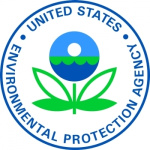- Industry: Government
- Number of terms: 11955
- Number of blossaries: 0
- Company Profile:
U.S. Environmental Protection Agency (EPA) is a federal agency responsible for the development and enforcement of regulations for human health and environment protection. The agency researches and sets standards for environmental programs and delegates. It was founded in 1970 following the proposal ...
The U.S. government agency which is involved in regulation of pesticides in the U.S., particularly enforcement of tolerances in food and feed products.
Industry:Agricultural chemicals
A tank and any underground piping connected to the tank that has 10% or more of its volume (including pipe volume) beneath the surface of the ground. USTs are designed to hold gasoline, other petroleum products, and hazardous materials.
Industry:Agricultural chemicals
Any organic compound which evaporates readily to the atmosphere. VOCs contribute significantly to photochemical smog production and certain health problems.
Industry:Agricultural chemicals
The combination of a designated use and the maximum concentration of a pollutant which will protect that use for any given body of water. For example, in a trout stream, the concentration of iron should not exceed 1 mg/l.
Industry:Agricultural chemicals
OSHA's Toxic and Hazardous Substances Tables (Z-1, Z-2, and Z-3) of air contaminants; any material found on these tables is considered hazardous.
Industry:Agricultural chemicals
An identification number that used to be assigned (for cataloging purposes) to volumes of studies submitted to OPP. This has been replaced by the Master Record Identification (MRID) system, which identifies each individual study. See also, Master Record Identification System.
Industry:Agricultural chemicals
The chemical or substance component of a pesticide product that can kill, repel, attract, mitigate or control a pest or that acts as a plant growth regulator, desiccant, or nitrogen stabilizer. The remainder of a formulated pesticide product consists of one or more “inert ingredients” (such as water, solvents, emulsifiers, surfactants, clay and propellants), which are there for reasons other than pesticidal activity.
Industry:Agricultural chemicals
An adverse effect on any living organism in which severe symptoms develop rapidly and often subside after the exposure stops.
Industry:Agricultural chemicals
Adverse effects that result from a single dose or single exposure of a chemical; any poisonous effect produced within a short period of time, usually less than 96 hours. This term normally is used to describe effects in experimental animals.
Industry:Agricultural chemicals
The sum total of all exposure to pesticides through inhalation, or dermal, oral, or optic contact.
Industry:Agricultural chemicals
